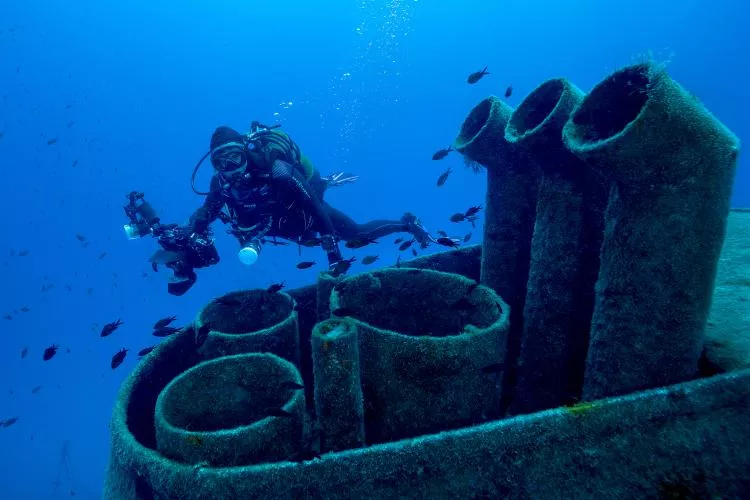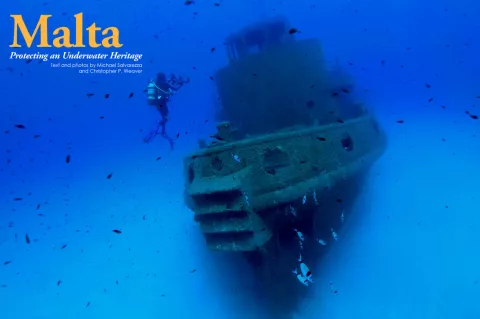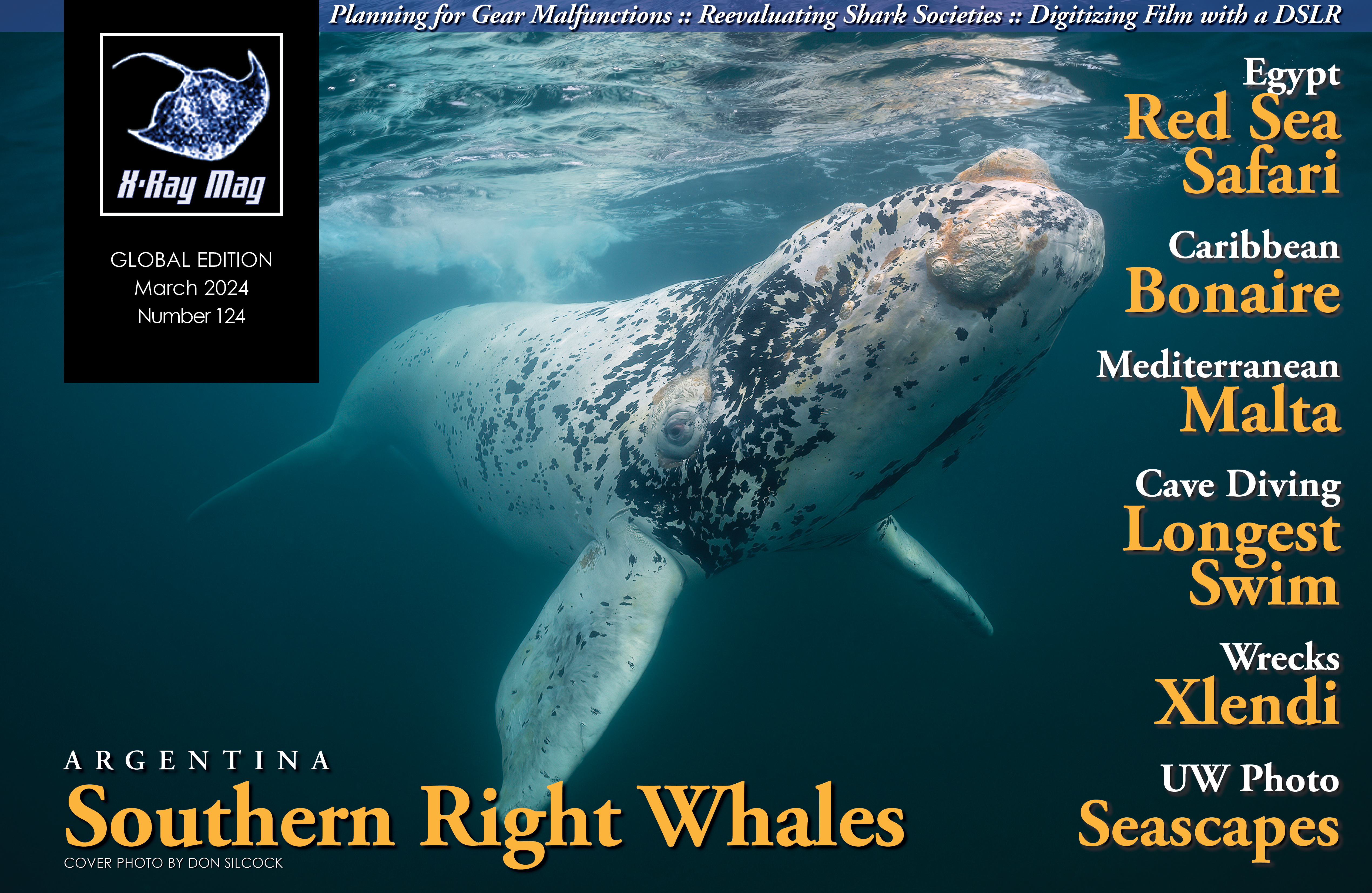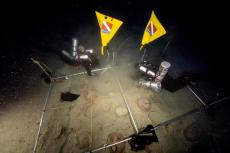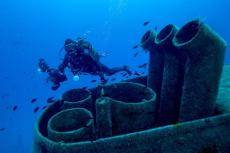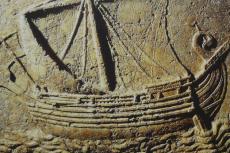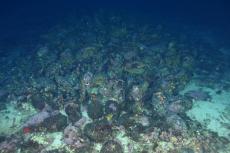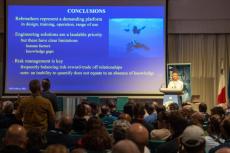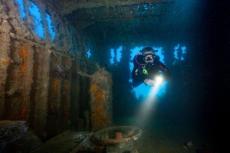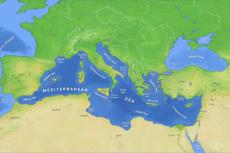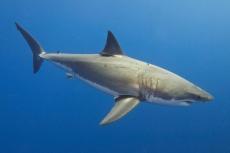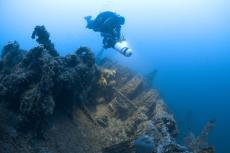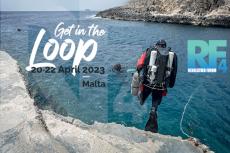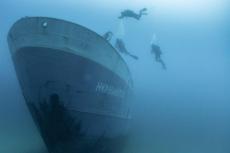In the waters of Malta, an island nation that sits in the middle of the Mediterranean Sea, there are deep historical shipwrecks dating back to ancient times, to the First and Second World Wars, and up to the present day. Michael Salvarezza and Christopher P. Weaver share their exploration of some of Malta’s wrecks and reefs.
Contributed by
The archipelago of Malta, which includes the main island of Malta and her smaller cousins Comino and Gozo, is centrally located in the Mediterranean, about an hour by fast boat south of Sicily. First inhabited around 5900 BC, the islands have been fought over for centuries as various empires and ambitious nations lusted over their strategic importance. The Phoenicians, Romans, Byzantines, Normans and Ottomans were among the empires that had ruled these islands at one time or another, along with the Spanish, French, and most recently, the British.
During the Second World War, Italian and German forces mercilessly bombed these islands in an effort to break the will of the Maltese and force a surrender. Throughout the siege, the Maltese held firm and, indeed, Britain’s King George VI awarded the George Cross to the people of Malta in 1942 for their bravery in the face of relentless attacks. In fact, Malta includes a representation of the George Cross in the upper left corner of its national flag.
Today, Malta is an independent republic, one that finds itself seeking to preserve and protect its rich history, both above and below the water, while confronting the environmental problems of the modern world.
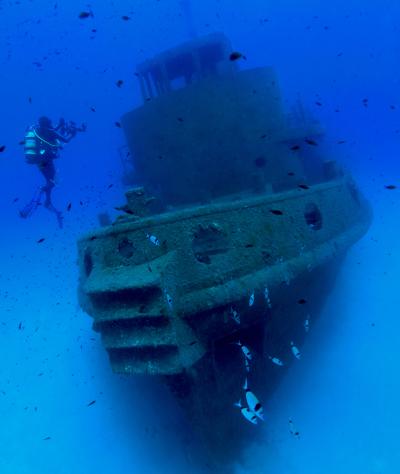
Diving Malta’s wrecks
On an early September morning, we found ourselves descending to the wreck of the Um El-Faroud, an abandoned 10,000-ton Libyan tanker that was intentionally scuttled in 1998 following an explosion while in dry dock three years earlier; the explosion killed nine ship workers. Today, the wreck sits in 120ft (36m) of seawater southwest of Wied iz-Zurrieq, near Qrendi. The wreck split into two during a bad storm in 2005. Exploring the Um El-Faroud got us thinking about Malta’s sunken history and its program to protect it.
According to Julia Zerafa, an archeologist with the Underwater Cultural Heritage Unit (UCHU), a working group within Heritage Malta, the mission of UCHU is to locate, protect, preserve, and eventually make accessible, deep-water historical remains in the waters of Malta. These are wrecks that lie deeper than 150ft (50m).
The Malta Cultural Heritage Act designates any wreck older than 50 years as historical, and therefore subject to protection. Currently, there are at least 22 identified wrecks, including a 2,700-year-old Phoenician-era wreck and 67,000 square meters of Punic archaeological deposit, off Gozo Island. The latter has been made available to the public as the Xlendi Underwater Archaeological Park. Other wrecks include dozens of aircraft crash sites, submarines and battleships from the First and Second World Wars.
“Once a wreck is identified as archeologically important,” Zerafa said, “a buffer zone is implemented around the site. Fishing and anchoring are prohibited.”
Heritage Malta divers are tasked with documenting the wreck site, and while the sites are strictly protected, some artifacts are occasionally removed for study and are eventually displayed in museums. Making the shipwrecks accessible goes much further than just displaying a handful of artifacts. Heritage Malta is committed to a program of using virtual reality headsets and other tools to provide access to schools and the general public, to connect people to the submerged history of the country. The deep-water wrecks are also made available to the general public by means of a “virtual museum,” which is accessible at: underwatermalta.org.
“Taking people to sites they cannot see for themselves is like taking them to a new world,” said Zerafa.
Recreational and technical divers are permitted to explore these wrecks as long as they arrange their dives through one of the dive centers on Malta that are specifically approved to visit these sites. To become certified to visit these wrecks, the dive center must commit to certain protocols and be educated on the parameters set forth by Heritage Malta.
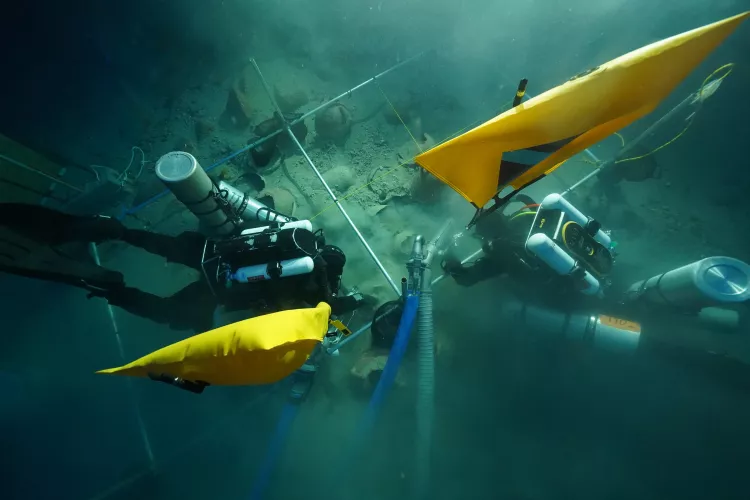
Historical heritage
Travelling anywhere in Malta will expose the visitor to the fascinating history of these islands. This history extends under the clear waters of the Mediterranean, and the work that is involved to protect that history is emblematic of the pride that Malta takes in its own heritage. But it is more than that.
“In the case of World War II, for example, the immediate relatives of people lost on these ships and planes are still alive today. They are not only historical wrecks but also war graves. Our work is about more than pride; it’s a moral obligation,” said Zerafa.
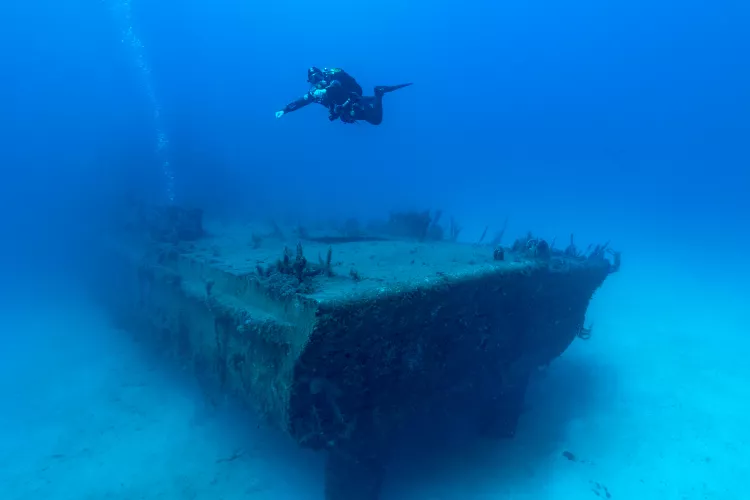
Ċirkewwa
Our next dives took us to Ċirkewwa, a popular shore-diving spot for recreational divers. Here, there are a number of accessible dive sites, including two small purposely sunk vessels—the P29 patrol boat and the Rozi tugboat. We were here to explore the reefs along this area, which feature walls of tumbling boulders, small tunnels and swim-throughs, and a beautiful natural underwater archway.
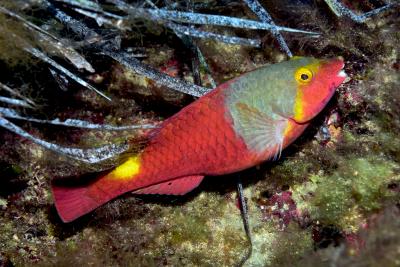
Despite the fascinating geological formations, we were interested in the marine life. All along these reefs are dense beds of seagrass, an important part of the local ecosystem. Flitting around the seagrass were several species of bream, the colorful ornate wrasse and the European parrotfish, which appeared dullish brown until the flash from our strobes revealed a brilliant red coloration.
Looking towards the sandy bottom, red mullet could be seen foraging for food and stirring up clouds of silt. In the rocky crevices, hordes of small cardinalfish hung still in the water and an occasional Mediterranean moray could be seen.
What we did not see were large schools of fish, nor did we spot anything big. An occasional jack would fly by, but other than that, the largest fish we came across were the dusky groupers. We wanted to investigate further and learn more about Malta’s marine environmental protection efforts.
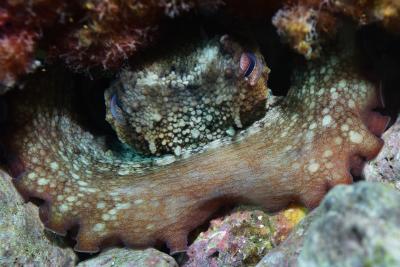
Environmental protection
The Environment and Resources Authority (ERA) states that their mission is “to safeguard the environment for a sustainable quality of life.” This mission extends to the waters around the archipelago. With a rapid push towards development and the growth of the tourism industry in Malta, this mission is a challenge.
According to Bart Romanczuk from the ERA, Malta has the largest amount of Marine Protected Areas (MPA) relative to the size of the country, with about 35 percent of the waters protected. “We have excellent cross government participation in this program, including from the Army, Navy, Heritage Malta, the Police and others,” reported Romanczuk.
The ERA has built an extensive permit system. Yasmin Clark, also from the ERA, said that “permits are required for virtually any activity within an MPA, ranging from development activities to beach cleanups.” Permits are designed to control the impact on activities in these areas.
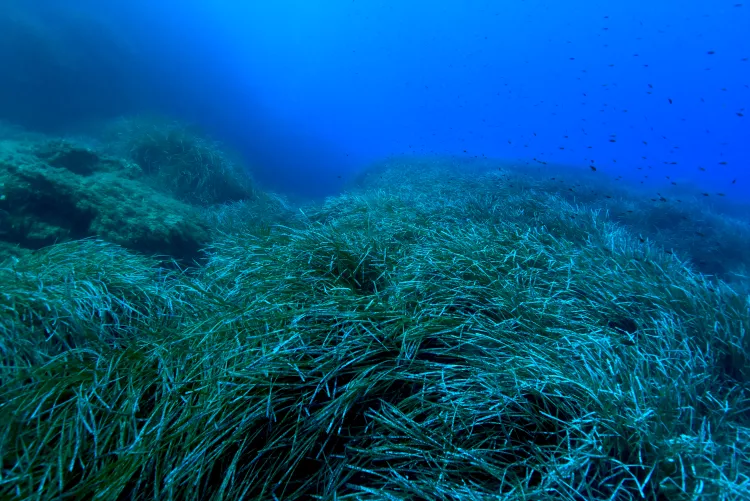
Protecting threatened species
Despite all of these measures, there are significant challenges facing the ERA. Several species of marine fauna are threatened or endangered, including loggerhead sea turtles, which often come ashore in Gozo to lay eggs.
Some areas within the MPA zones were specifically created to protect beds of seagrass known as Neptune grass, which are important habitats for coastal biodiversity. The seagrass is often referred to as the “lungs of the sea,” and it is critically important as both a carbon sink and a generator of oxygen in the water. The Maltese top-shell, a protected gastropod endemic to these waters, is found in these beds of seagrass.
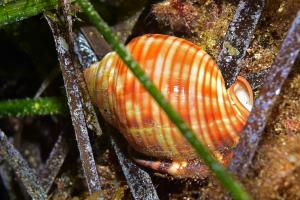
In addition, sites have been included that are important to the loggerhead sea turtles, bottlenose dolphins and three species of seabirds—the Scopoli’s shearwater, Yelkouan shearwater and European storm petrel. The populations of these seabirds found in Malta are significant. Fully 10 percent of the global population of Yelkouan shearwaters find their way to Malta, as do three percent of the world’s population of Scopoli’s shearwaters. The European storm petrel breeds extensively in Malta, with 50 percent of the Mediterranean population found on the archipelago. Malta’s approach to MPAs protects both the cliffs that the birds nest in and the waters they forage in.
Indeed, the MPAs are designed to cover a diversity of habitats, ranging from the seagrass beds to reefs, caves and sand banks. Because Malta is a member of the European Union, the MPA approach in Malta is designed to fit with the larger directives from the EU. The Marine Strategy Framework Directive (MSFD) aims to protect more effectively the marine environment across Europe, including the Mediterranean. The MSFD was adopted on 17 June 2008, and each member state is required to develop a strategy for its marine waters. Malta’s efforts align with these objectives.
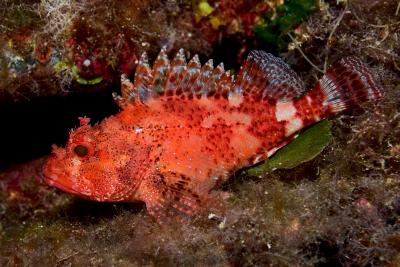
Still, the ERA’s ability to enforce regulations and protections is limited. They are actively looking to engage divers and citizen scientists to help monitor and measure the health of the various marine environments.
Invasive species
One of the most worrisome threats to the health of Malta’s waters is the rising migration of invasive species arriving from the eastern Mediterranean Sea. Fish, jellyfish, prawns and other marine species are moving in, their movements fueled by warming waters and human activities. In fact, more than 1,000 non-indigenous species have been identified in the Mediterranean and the Black Sea. As in the Caribbean Sea, one interloper is the lionfish, a voracious predator that has migrated from the Red Sea and has the ability to decimate local fish populations.
Another group of organisms that are finding their way into Malta’s waters more frequently are various species of jellyfish. As the waters of the Mediterranean warm, jellyfish are migrating west into the central parts of the sea. Of these, the mauve stinger is of more concern, as it packs a nasty sting and can be dangerous. Larger populations of other species, such as the fried egg jellyfish, have been spotted; however, the fried egg jellyfish is beautiful and does not sting.
As with much of the world’s marine environments, waters are warming, and marine ecosystems are changing as a result. Malta is no exception.
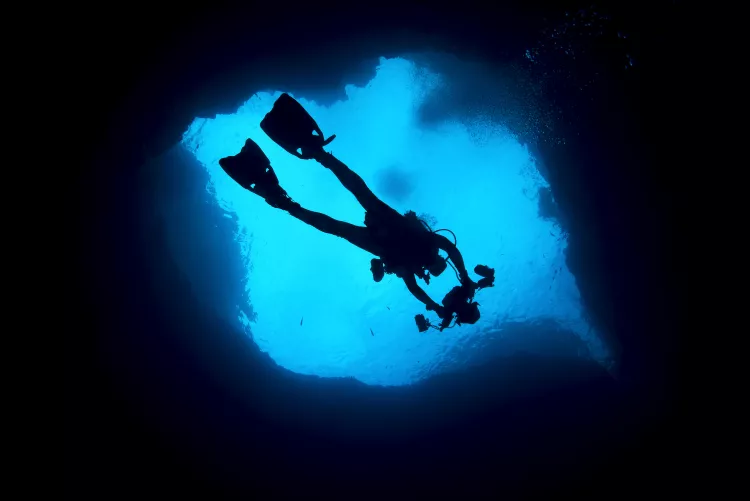
Blue Hole
Our final dives were on Gozo, at a place known as the Blue Hole. Here, we descended into a vertical tunnel, with the divers above us silhouetted against the brilliant blue surface waters. Inside this unique site, we marveled at the geology of this place. Outside the structure along an open wall of rocky boulders, we swam over the geogenic reefs and searched for marine life. Ironically, here among the large outcroppings of rock and stone, we spotted some of Malta’s smallest jewels—the nudibranchs.
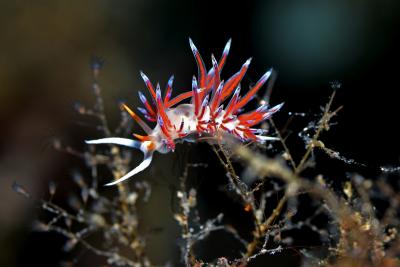
These flamboyantly colored relatives of snails stand out from an otherwise drab background. Underwater photographers travel the world to find them, and they are so beguiling that one of the local dive centers, DiveWise, has an instructor who is developing an entire PADI Specialty Certification course on nudibranchs.
We watched as a brilliantly blue Paraflabellina ischitana nudibranch struggled to creep forward in the moving water, its frilly appendages waving furiously in the swell. The determination of the small sea slug seemed an apt metaphor for Malta itself.
Facing challenges
Unconquerable through the ages, Malta has always risen to meet the challenges it has faced. Today, the country simultaneously seeks to modernize and rapidly develop, endeavoring to grow into a modern, cultural center of the Mediterranean, while preserving, protecting and honoring its past history.
Sometimes, these objectives are at odds with each other. The efforts to protect historical shipwrecks for future generations are laudable and a model for other countries with similar sunken legacies in their waters. But balancing the needs for protection and access can be a challenge. The inherent difficulty in protecting marine environments from the significant threats brought by human activity, climate change and the loss of biodiversity can be daunting. Malta will need to be as determined and resilient as it has been in the past when facing threats to its islands while fighting these issues.
For us divers, Malta’s waters have a magical quality. We are confident that Malta is poised to do all it can to preserve its marine resources. ■

